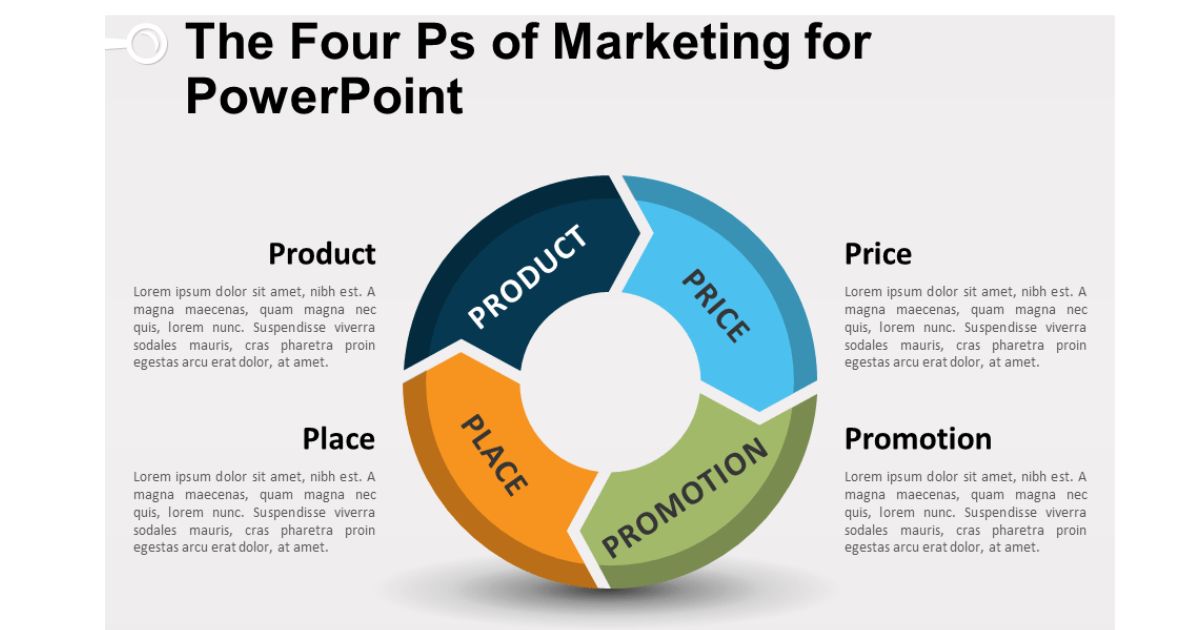In the dynamic world of marketing, understanding the four P’s of the marketing mix is essential for business success. Did you know that 91% of marketers believe that implementing an effective mix of product, price, place, and promotion is crucial for driving sales and creating brand awareness? This article explores the role and importance of each P, how they interplay in marketing strategy, and showcases real-life case studies of successful marketing mix strategies. Join us as we delve into the fascinating world of the four P’s of the marketing mix.
Key Takeaways
- The Four P’s of the Marketing Mix are Product, Price, Place, and Promotion.
- The digital age requires businesses to adapt their marketing strategies by focusing on creating innovative and personalized products, analyzing market trends for competitive pricing, utilizing digital channels for promotion and engagement, and establishing a strong online presence.
- Successful marketing mix strategies can result in business success and brand loyalty, create a competitive edge in the market, resonate with the target audience, and drive growth.
- Quality is crucial for product success in the market, and consumers desire products that exceed their expectations. Perceived value is important in setting the right price, and strategic selection of channels and locations is crucial for effective placement. Promotion is essential for creating awareness and generating revenue, and it can be achieved through advertising, sales promotion, public relations, and personal selling.
Product: Understanding the Role and Importance
The product’s quality is a crucial factor in determining its success in the market. Consumers today, more than ever, desire products that not only meet their needs but also exceed their expectations. A high-quality product not only satisfies the customer but also builds trust and loyalty, leading to repeat purchases and positive word-of-mouth. Research shows that 86% of consumers are willing to pay more for a product that offers better quality. Moreover, 89% of customers are likely to switch brands if they experience poor product quality. To ensure the success of a product, businesses must focus on delivering exceptional quality, consistently innovating, and addressing any customer concerns promptly. By doing so, they can establish themselves as a trusted brand in the market and foster a sense of belonging among their target audience.
Price: Determining the Right Value for Your Offering
One important factor in determining the right value for your offering is considering the perceived value it holds for potential customers. The price you set for your product or service should align with the value customers perceive they are receiving. To help you determine the right value for your offering, consider the following:
- Conduct market research to understand the price range customers are willing to pay for similar products.
- Analyze your costs and expenses to ensure you are setting a price that allows for profitability.
- Consider the perceived value of your brand and how it compares to competitors in the market.
- Continuously monitor and adjust your pricing strategy based on market demand and customer feedback.
Place: Reaching Your Target Audience Effectively
To effectively reach your target audience, you must strategically choose the channels and locations where your product or service will be available. Place, as one of the four P’s of the marketing mix, plays a crucial role in ensuring that your offering reaches the right customers at the right time. It involves understanding your target audience’s preferences and behaviors, and then selecting distribution channels that align with those characteristics. By analyzing data and market trends, you can determine the most effective placement strategies. This could include selling your product through online platforms, retail stores, or even partnering with other businesses. Additionally, considering the geographical locations where your target audience is concentrated can help you optimize your distribution channels and establish a strong presence in those areas. Ultimately, effective place strategies not only increase your product’s accessibility but also enhance your brand’s visibility and relevance among your target audience.
Promotion: Creating Awareness and Driving Sales
Promotion plays a vital role in a company’s marketing strategy by creating awareness and driving sales. It is essential for businesses to effectively promote their products or services to reach their target audience and generate revenue. Here are four key elements of promotion that companies must consider:
- Advertising: Utilizing various channels such as television, radio, print, and online platforms to deliver persuasive messages to potential customers.
- Sales Promotion: Offering temporary incentives, discounts, or special deals to entice customers to make a purchase.
- Public Relations: Building and maintaining a positive image through media relations, events, sponsorships, and community involvement.
- Personal Selling: Directly engaging with customers through face-to-face interactions, phone calls, or online chat to understand their needs and provide tailored solutions.
The Interplay of the Four P’s in Marketing Strategy
Analyzing the interplay between the four P’s of the marketing mix is crucial for developing an effective marketing strategy. The four P’s, namely product, price, place, and promotion, work together to create a comprehensive marketing approach. The product’s features, benefits, and quality determine its marketability and positioning. The price reflects the perceived value of the product and influences consumer behavior. The place refers to the distribution channels and availability of the product, ensuring it reaches the target market efficiently. Finally, promotion encompasses all communication activities to create awareness and drive sales. Understanding how these elements interact allows marketers to make informed decisions and create a cohesive marketing strategy. By optimizing the interplay between the four P’s, companies can develop a competitive advantage and achieve their marketing objectives.
Implementing the Four P’s for Business Success
One way businesses can achieve success is by effectively implementing the four P’s of the marketing mix. These four elements, namely Product, Price, Place, and Promotion, form the foundation of a successful marketing strategy. By carefully crafting each aspect, businesses can create a strong brand presence, attract customers, and ultimately drive sales. Here are four key steps to implementing the four P’s for business success:
- Product: Develop a high-quality product or service that meets the needs and desires of your target market.
- Price: Determine the optimal price point that balances profitability with customer value perception.
- Place: Identify the most effective distribution channels to ensure your product is easily accessible to your target audience.
- Promotion: Create compelling marketing campaigns to generate awareness, interest, and desire for your product.
The Evolution of the Four P’s in the Digital Age
The digital age has revolutionized the way businesses approach the four P’s of the marketing mix. In today’s digital landscape, traditional marketing strategies are no longer sufficient. The rise of social media, online shopping, and mobile technology has transformed consumer behavior, requiring businesses to adapt their marketing strategies accordingly.
Product: In the digital age, businesses must focus on creating innovative and personalized products that cater to the evolving needs and preferences of consumers. The ability to gather data and insights from online platforms allows companies to tailor their products to specific target markets.
Price: Digital platforms have made price comparisons easier than ever before. Businesses need to carefully analyze market trends and competitively price their products to remain competitive in the digital marketplace.
Promotion: The digital age has opened up new avenues for promotion, such as social media marketing, influencer partnerships, and targeted online advertising. Businesses must leverage these digital channels to effectively reach and engage their target audience.
Place: With the rise of e-commerce, businesses need to establish a strong online presence and optimize their websites for a seamless customer experience. Additionally, businesses can utilize digital platforms to expand their reach and target new markets.
Case Studies: Successful Marketing Mix Strategies
Successfully implementing the marketing mix strategies can lead to significant business growth and increased market share. Here are four case studies that demonstrate the effectiveness of these strategies:
- Coca-Cola: By focusing on product innovation, Coca-Cola has successfully maintained its market leadership. They constantly introduce new flavors and packaging options to cater to changing consumer preferences.
- Apple: Apple’s marketing mix strategy revolves around product design, pricing, and promotion. Their sleek and user-friendly products, premium pricing, and captivating advertising campaigns have helped them create a strong brand image and attract a loyal customer base.
- Nike: Nike’s success can be attributed to its effective use of the marketing mix. They offer a wide range of high-quality products, use celebrity endorsements to enhance brand image, and invest heavily in advertising and sponsorships.
- Amazon: With a strong focus on customer service, Amazon has become the world’s largest online retailer. Their competitive pricing, vast product selection, and fast delivery options have helped them dominate the e-commerce industry.
These case studies highlight how implementing the marketing mix strategies can result in business success, brand loyalty, and a competitive edge in the market. By carefully considering the four P’s – product, price, promotion, and place – companies can create a compelling marketing mix that resonates with their target audience and drives growth.
Frequently Asked Questions
How Can a Company Determine the Right Value for Their Offering When Setting the Price?
Determining the right value for a company’s offering when setting the price requires a thorough understanding of the target market’s preferences, competitors’ prices, cost of production, and desired profit margins. Market research and analysis are essential in making an informed pricing decision.
What Are Some Effective Strategies for Reaching a Target Audience in the Right Place?
Effective strategies for reaching a target audience in the right place include conducting market research, identifying key demographics, utilizing social media platforms, optimizing website content, and partnering with relevant influencers or organizations.
How Can Companies Create Awareness and Drive Sales Through Promotional Activities?
Companies can create awareness and drive sales through strategic promotional activities. By effectively communicating the value of their products or services, targeting the right audience, and utilizing various marketing channels, companies can increase brand visibility and ultimately boost sales.
What Is the Interplay Between the Four P’s in Developing a Marketing Strategy?
The interplay between the four P’s in developing a marketing strategy is crucial. Each element – product, price, place, and promotion – must be carefully considered and aligned to effectively reach and engage the target audience, drive sales, and achieve business objectives.
How Can Businesses Successfully Implement the Four P’s for Long-Term Success?
Businesses can achieve long-term success by effectively implementing the four P’s of the marketing mix. This entails aligning product, price, place, and promotion strategies to meet customer needs, create value, and differentiate from competitors.
Conclusion
In conclusion, the four P’s of the marketing mix (product, price, place, and promotion) play a crucial role in developing an effective marketing strategy. By understanding the role and importance of each element, businesses can create a valuable offering, determine the right value, reach their target audience, and drive sales. Implementing these four P’s can lead to business success, especially in the evolving digital age. As the saying goes, “Success is not the key to happiness, but happiness is the key to success.”










